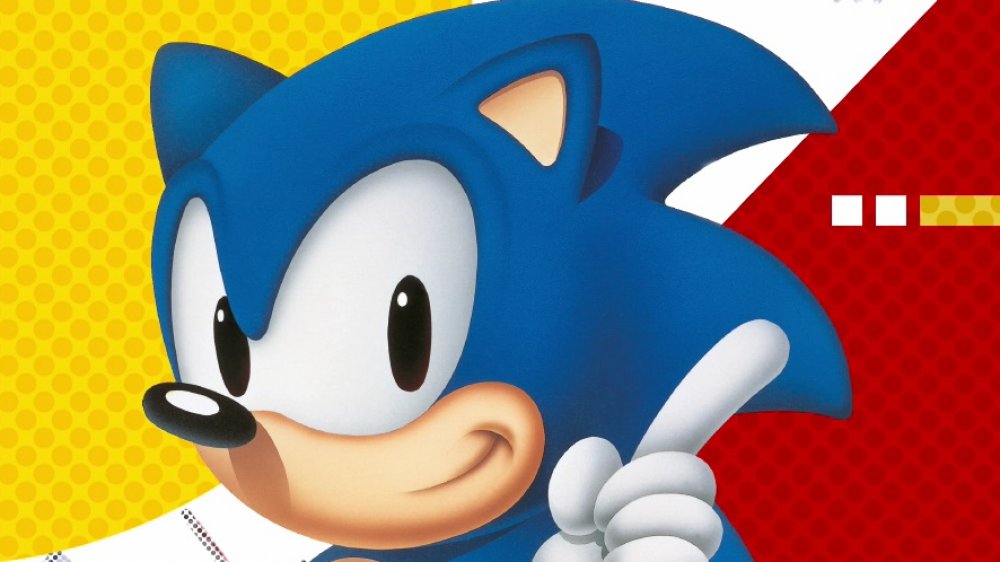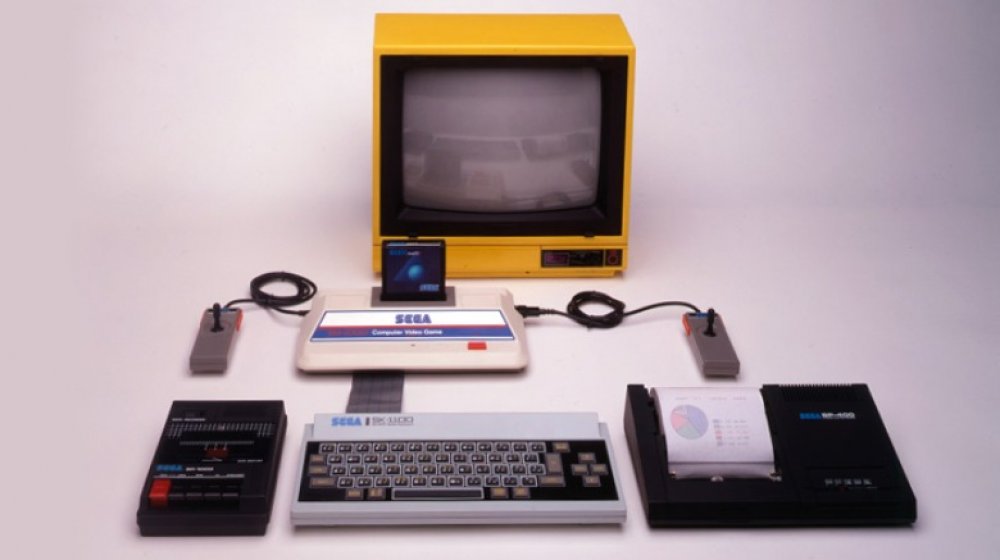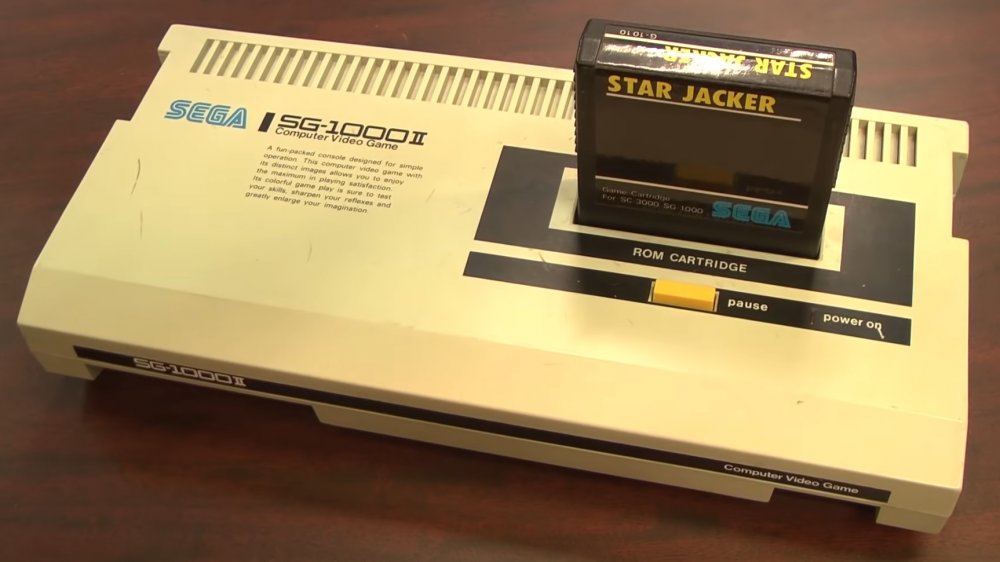The Untold Truth Of Sega's First Console
A gaming powerhouse with a legacy that goes back 60 years, Sega is one of the most well-known video game companies in history. Today Sega's focus lies mostly on software development, managing proprietary franchises like Sonic the Hedgehog as well as third-party properties like the Total War series. However, during the '80s and '90s, most gamers knew Sega better for its line of consoles that competed against the original Nintendo and the Super Nintendo.
When you think of Sega's long-gone era of creating its own game consoles, you might be hard-pressed to name anything outside of the Sega Genesis, the Sega Saturn, or the Sega Dreamcast. Diehard Sega fans might be familiar with the Master System that came before the Genesis, but even that wasn't Sega's first attempt to capture the home console market.
That honor belongs to the SG-1000, a straightforward first attempt for Sega in the console wars that put up a good fight against the Nintendo Famicom in Japan and other Asian markets, but never saw release in the United States or Europe. This is the untold truth of Sega's first console.
The SG-1000 arrived on the same day as the NES
July 15, 1983 was an important day for gamers, as it saw the launch of both Nintendo and Sega's first home video game consoles. The Nintendo Famicom — later called the Nintendo Entertainment System in the U.S. — and the SG-1000 hit shelves in Japan on the same day that summer, kicking off one of the most important competitions in pre-2000s console history.
Unfortunately, the SG-1000 was behind the times from the day it hit stores. While its Z80 processor produced visuals on par with other consoles like the Colecovision, the SG-1000 was outclassed by the Nintendo Famicom in almost every way. A hardwired, joystick-style controller restricted the SG-1000. Hardwiring the controller was a cost-saving measure, but consumers weren't interested in the difficult to use, unresponsive analog stick with buttons placed awkwardly on the side.
A collector on Wired speculated that the games would be easier to play on the PC version of the SG-1000, the SG-3000, thanks to it having a keyboard. However, gamers did not seem interested in paying double the price for that machine.
Sega replaced its first console within a year
While the Nintendo Famicom did come to dominate the market, the SG-1000 still turned in a respectable effort. Sega put out over 20 games for the SG-1000 in 1983. In contrast, Nintendo only put out nine. This big push in the marketplace led to strong sales, with 160,000 units sold in the first year the SG-1000 was available.
Sega knew that Nintendo had a better system, which prompted the designers to replace the SG-1000 with the SG-1000 2 in 1984. However, the only new change during this switch was an improved gamepad controller. While this shift was necessary, the graphics stayed stuck in the past. Within two years, Sega rebranded the SG-1000 as the Master System, which became better known when it finally achieved a worldwide release at a lower price point.
Within the first two years Sega and Nintendo had consoles were on the market, the SG-1000 family of consoles had sold around 2 million units, while the Nintendo Famicom sold 4.5 million units. Nintendo would maintain this advantage until Sega truly upgraded its hardware with the Sega Genesis and became a legitimate competitor to Nintendo. Sadly, a few years later, Sega bowed out of console production altogether.



